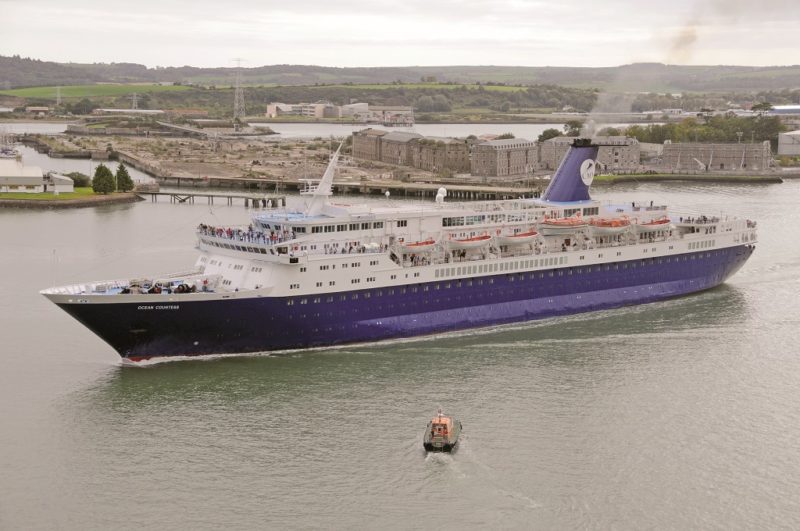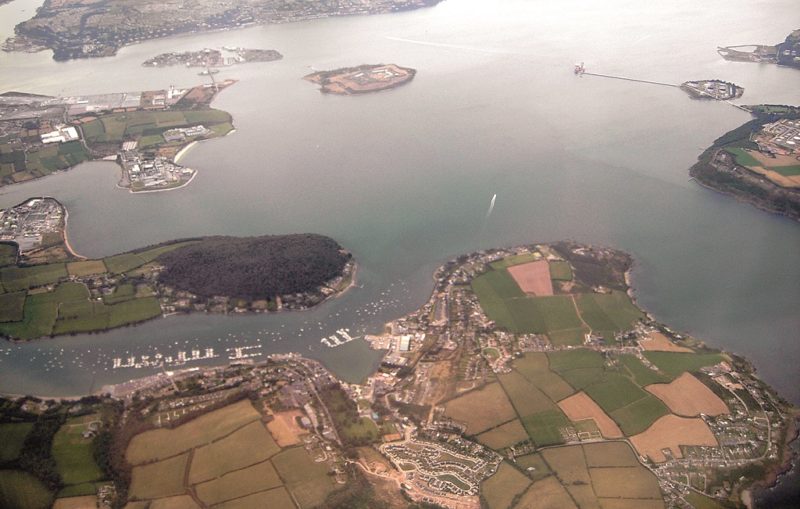
The Port of Cork is a vibrant, modern port spread out over a number of square miles of Southern Ireland, and encompassing a very wide Harbour Entrance, the Lower Harbour comprising Cobh Roadstead, Whitegate Oil Terminal, Haulbowline Island, Spike Island, the Ringaskiddy ro-ro berths, and the West Passage leading northwards to Cork Harbour and then west to the River Lee and the Tivoli Dock Estate and the Cork City Quays. It is a key seaport for Southern Ireland and also encompasses the famous Whiddy Island Oil Terminal on Bantry Bay over fifty miles to the west overland or longer by sea.
The Victorian resort of Cobh to south of Cork has one of the largest natural deep water ports in the world, and the second largest by navigable area. There are ro-ro, lo-lo, breakbulk, and dry bulk berths and the Cobh Cruise Terminal, European ro-ro trades by two well – known ferry companies, and a Transatlantic service to Philadelphia. Key developments are planned to increase annual port traffic of exports and imports to well above the present 11.0 million tonnes today.
The River Lee runs through Cork having risen in the Shehy Mountains on the border of West County Cork, and splits in two channels, North Channel and South Channel, at Cork creating an island on which the City of Cork was built. The international Cork Airport is five miles west of Passage West, and a hydro-electric scheme lies upriver from Cork with the Iniscarra and Carrigadrohid dams and reservoirs. The River Lee is crossed by 42 bridges of which 29 are crossings in Cork.


HISTORY OF CORK
The County of Cork has been colloquially referred to as ‘The Rebel Country’ since the 15th century, and more particularly the prominent role that the City of Cork played in the Irish War of Independence (1919-1921) when it was the scene of considerable fighting, and also politically during the Anti-Treaty period as a stronghold during the Irish Civil War (1922-1923). Much has been made of the role that Dublin played in these bloody civil wars, but Cork was equally rebellious, until in 1932 the Republican leader Eamonn De Valera became President of the Irish Free State, and then it severed all links with Britain. In 1937, Southern Ireland was renamed Eire, and then in 1949 the Republic of Ireland.
In 1920, half of the entire City of Cork was burnt down in the fighting, with fighting and rioting across the South Gate Bridge, an old humpback bridge that links the south side of Cork to the city centre. It has a bricked-up dungeon entrance under its arch, where criminals were executed and had their heads displayed on spikes on top of the South Gate Prison to deter anyone else from committing crimes. The houses, streets and grand buildings were not rebuilt afterwards in the style more keeping with the distinctive character of Cork people. Cork is the second city of the Republic of Ireland after Dublin and is built on a wide area of the marshes of the River Lee, which flows through it. Indeed, in Gaelic, Cork means ‘marsh’, not the tree substance that has bottled wine all over the world for centuries. The people of Cork lived a ‘clan’ existence for centuries in olden days, and inter-married within these clans.
Cork owes the most modern shopping street in the Republic of Cork to a tragedy of ‘The Troubles’ on 11th December 1920 when the area was burnt down during severe fighting with the Black and Tans constables of the Royal Irish Constabulary (RIC), recruitment for which began in Britain in January 1920 in reprisals for IRA attacks. Over 300 buildings were destroyed, and many other small towns and villages around the County of Cork suffered a similar fate including Fermoy. However, St. Patrick’s Street was rebuilt into a fine shopping street as the ‘Regent Street of Ireland’.

Subscribe today to read the full article!
Simply click below to subscribe and not only read the full article instantly, but gain unparalleled access to the specialist magazine for shipping enthusiasts.




Comments
Sorry, comments are closed for this item